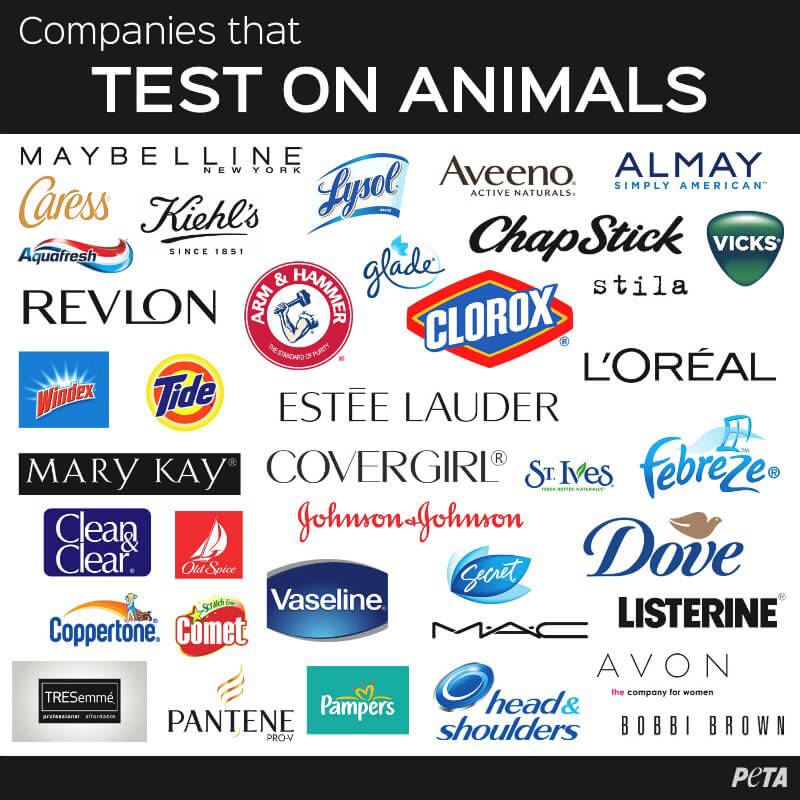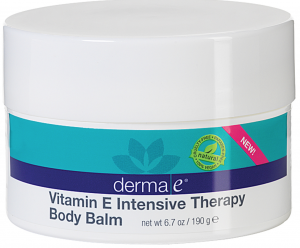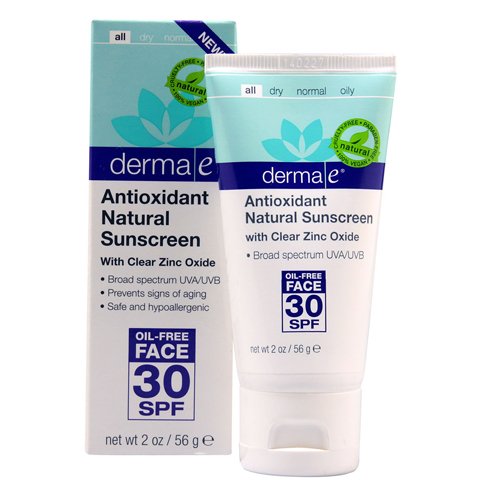
Many natural and conventional skin care and beauty products come with the label “cruelty-free” or “no animal testing”. What does this really mean?
First enacted in 1938, the United States Federal Food, Drug, and Cosmetic Act (FD&C Act) defines cosmetics as:
Articles intended to be rubbed, poured, sprinkled, or sprayed on, introduced into, or otherwise applied to the human body…for cleansing, beautifying, promoting attractiveness, or altering the appearance” (FD&C Act, sec. 201(i)). Among the products included in this definition are skin moisturizers, perfumes, lipsticks, fingernail polishes, eye and facial makeup, cleansing shampoos, permanent waves, hair colors, and deodorants, as well as any substance intended for use as a component of a cosmetic product. It does not include soap. ((http://www.fda.gov/Cosmetics/GuidanceRegulation/LawsRegulations/ucm074162.htm))
By law, the US Food and Drug Administration (FDA) requires manufactures to ensure the safety of their skin care and beauty products. It does not require “specific” testing; however, it advises “manufacturers to use whatever testing is necessary to ensure the safety of their products and ingredients”.((http://www.fda.gov/Cosmetics/GuidanceRegulation/LawsRegulations/ucm074162.htm)) For some manufacturers, this means animal testing.

Animal testing in the beauty industry
The Humane Society International estimates 100,000-200,000 animals are used for cosmetic testing each year. Rabbits, guinea pigs, hamsters, rats and mice are used primarily to test for skin and eye irritation. Other sources have higher estimates of animal testing worldwide.((https://www.theguardian.com/world/2015/nov/07/china-cosmetics-uk-training-stop-animal-testing))
Chemicals are rubbed onto the shaved skin or dripped into the eyes of rabbits; repeated oral force-feeding studies lasting weeks or months to look for signs of general illness or specific health hazards, such as cancer or birth defects; and even widely condemned “lethal dose” tests, in which animals are forced to swallow massive amounts of a test chemical to determine the dose that causes death. These tests can cause considerable pain and distress including blindness, swollen eyes, sore bleeding skin, internal bleeding and organ damage, birth defects, convulsions and death. Pain relief is not provided and at the end of a test the animals are killed, normally by asphyxiation, neck-breaking or decapitation.((http://www.hsi.org/issues/becrueltyfree/facts/about_cosmetics_animal_testing.html))
| TYPE OF TEST | ANIMALS — USED | WHAT THE ANIMALS ENDURE | PURPOSE OF TEST |
| Skin sensitization |
  32 guinea pigs or 16 mice |
The test substance is applied to the surface of the skin or injected under the skin of a guinea pig, or applied to the ear of a mouse. Animals’ skin may show signs of redness, ulcers, scaling, inflammation, and itchiness. | Tests for allergic reaction on skin. |
| Skin irritation/ corrosion |  1-3 rabbits |
The test substance is applied to the shaved skin of rabbits. Their skin may show signs of redness, rash, lesions, scaling, inflammation, and/or other signs of damage. | Tests for skin irritation (reversible skin damage) and skin corrosion (severe and irreversible skin damage). |
| Eye irritation/ corrosion |  1-3 rabbits |
The test substance is applied to a rabbits’ eyes. Their eyes may show signs of redness, bleeding, ulcers, blindness, and/or other signs of damage. | Tests for eye irritation (reversible eye damage) and eye corrosion (severe and irreversible eye damage). |
| Acute oral toxicity |
|
The test substance is forced down a rat’s throat using a syringe. Animals may experience diarrhea, convulsions, bleeding from the mouth, seizures, paralysis, and ultimately, death. | Determines the amount of a substance that causes half of the exposed animals to die within 14 days of exposure when the substance is swallowed. |
| Acute dermal toxicity |    30 rats, rabbits or guinea pigs |
The test substance is applied to the shaved skin of the rat, guinea pig, or rabbit and covered with a patch to keep her from licking or otherwise removing the substance. | Determines the amount of a substance that causes half of the exposed animals to die within 14 days of exposure when the substance is applied to the skin for 24 hours. |
| Acute inhalation toxicity |  20-40 rats |
Rats are locked in full-body restraint tubes and forced to inhale the test substance. Animals may experience bleeding of the nose, convulsions, paralysis, seizures, and ultimately, death. | Determines the amount of a substance that causes half of the exposed animals to die within 14 days of exposure when the substance is inhaled. |
| Subacute and subchronic toxicity |  40 rats (14-28 day) or 80 rats |
Rats are force-fed a substance, forced to inhale a substance, and/or a substance applied to their skin daily for 14, 21, 28, 90 and/or 180 days. At the end of the exposure period the animals are killed and their organs are examined. | Tests for changes in the cells or organs caused by repeat exposure. |
| Chronic toxicity |
 120 rats |
Rats are force-fed a substance, forced to inhale a substance, and/or a substance applied to their skin daily for one year or longer. At the end of the exposure period the animals are killed and their organs are examined. | Measures the absorption, distribution, and metabolism of a substance throughout the tissues and organs following exposure. |
| Carcinogenicity |
  400 mice + 400 rats |
A mouse is exposed to a substance either by being fed the substance through their food or water, being force-fed the substance, having it rubbed on their skin, or being forced to inhale the substance. After two years of daily exposure, she is killed so her tissues can be examined for signs of cancer (or other signs of toxicity). | Tests for cancer and other long-term effects of exposure. |
| Toxicokinetics |  4-12 rats |
A rat is exposed to a substance either by being fed the substance through their food or water, being force-fed the substance, having it rubbed on their skin, or being forced to inhale the substance. He may be exposed once or multiple times depending on the substance. Blood is drawn at daily intervals to determine the peak concentration of substance in the blood. He is then killed at a specific time-point; different animals are killed at different times to obtain a record of how the substance moves through their body over time. | Measures the absorption, distribution, and metabolism of a substance throughout the tissues and organs following exposure. |
| Reproductive toxicity |
 1,400-2,600 rats |
Male and female adult rats are exposed, usually by force-feeding, for at least two weeks and then mated. The pregnant mothers are then exposed daily throughout pregnancy and breast-feeding and are then killed. After weaning, the pups are force-fed throughout their lifetimes, sometimes experiencing symptoms of chronic poisoning such as weight loss or convulsions. Pups that survive until puberty are then mated, and force-feeding continues through the second generation’s pregnancy and breast feeding. At the time of weaning of the second generation, mothers and pups are all killed and their tissues examined. | Tests for effects on fertility, ability to reproduce, and birth defects. |
| Developmental toxicity (birth defects) |
  660 rabbits (100 adult females and 560 pups) or 1,300 rats (100 adult females and 1,200 pups) |
A pregnant female is exposed, usually by force-feeding, starting at the initiation of pregnancy and contiuing throughout the pregnancy. She is then killed on the day before she is expected to give birth (on average, 22 days for rats or 31 days for rabbits). Her pups are extracted and evaluated for signs of developmental abnormalities. | Tests for birth defects. |
| Genetic toxicity/ mutagenicity* |   80-500 mice or rats |
There are several different tests for genetic alterations that use mice or rats. In a common test, a mouse or rat is force-fed the substance on a daily basis for at least 14 days. Samples of his bone marrow and/or blood are taken to look for genetic changes. | Tests for the beginning stages of cancer. |
* Depending on level of concern and tests performed, mutagenicity testing is usually a battery of in vitro (non-animal) and animal tests.((http://www.hsi.org/campaigns/end_animal_testing/facts/tests.html))
Cosmetic Animal Testing: China vs. Europe
Although the US does not have a ban on cosmetic animal testing, the European Union does. Enacted in 2009, the EU does not allow for the sale of any cosmetic or its ingredients that has conducted new animal testing after March 2013.((http://www.hsi.org/issues/becrueltyfree/facts/about_cosmetics_animal_testing.html)) In stark contrast, China legally requires animal testing for of all cosmetics! That means cruelty-free products made in Europe or anywhere in the world have to be tested on animals before they can be sold in China.((https://www.theguardian.com/world/2015/nov/07/china-cosmetics-uk-training-stop-animal-testing))
Just because your cosmetic product says “No animal testing”, does not mean it has or will not be tested on animals for other markets.
If the manufacturer wishes to sell in China, “a major market for western firms”, it will be tested on animals.
The Guardian reports:
“There is a huge appetite for European cosmetics in China, thanks to [the country’s] growth in affluence. Cosmetics, moisturisers, sun preparations, you name it. If it comes from Europe, it must be great.”
In total, about 300,000 animals are used for tests in China, MacArthur Clark said. “These creatures are usually anaesthetised and killed after the test is completed,” she added.((https://www.theguardian.com/world/2015/nov/07/china-cosmetics-uk-training-stop-animal-testing))
Just three days ago, a European court ruled on a case filed by the European Federation for Cosmetic Ingredients. The court upheld the EU law “that only humane, non-animal methods can be used to satisfy the EU safety requirements”; however, it did allow for products to be sold in the EU that were tested on animals in China for that market.((http://www.peta.org.uk/blog/animal-testing-cosmetics-court-ruling/)) The catch is that animal testing must not be used “demonstrate product safety” to still meet EU law.((https://chemicalwatch.com/49808/animal-welfare-ngos-welcome-ecj-ruling-on-cosmetics)) This loophole mean that the EU law and cruelty-free labels may be misleading in protecting animal rights.
Scottish Legal News reports:
Placing a cosmetic product containing ingredients which have been tested on animals on the EU market may be prohibited where that testing has been conducted outside the EU in order to market the product in third countries and where the results of that testing are used to prove the safety of the product…
The court concluded that the placing on the EU market of cosmetic products containing some ingredients that have been tested on animals outside the EU in order to market those products in third countries may be prohibited if the data resulting from that testing is used to prove the safety of the products concerned for the purposes of placing them on the EU market.((http://www.scottishlegal.com/2016/09/22/luxembourg-cosmetics-tested-on-animals-outside-the-eu-may-still-be-prohibited/))
Photo credit: missgeok via Foter.com / CC BY-NC-SA
The truth behind no animal testing and cruelty-free labels
The China vs. Europe animal testing regulations demonstrates a cruelty-free or no animal testing on a label may or may not be 100% honest. As for Europe, the label means no new animal testing occurred that was used to demonstrate the product’s safety.
Just because a label states it is cruelty-free, it does not mean that it is completely free of animal testing. Many of the ingredients used in modern cosmetics were tested on animals in the past to prove their safety. No new testing is required because these ingredients have a proven safety record. Another loophole is the ingredients may have been tested separately in new animal testing but not as a finished as a product, so technically no animal testing has occurred. Yet another loophole is a third-party manufacturer conducted the animal testing of ingredients.((http://www.leapingbunny.org/about/the-standard))
No animal testing or cruelty-free label may not be fully transparent or mean what you assume for the following reasons:
- A product is sold in China
- The ingredients were tested on animals in the past
- The ingredients are tested individually and not as a whole product
- The ingredients are tested by a third-party
The FDA explains:
Consumers sometimes ask about use of claims such as “Cruelty-Free” or “Not Tested on Animals” on cosmetic labeling.
Some cosmetic companies promote their products with claims of this kind in their labeling or advertising. The unrestricted use of these phrases by cosmetic companies is possible because there are no legal definitions for these terms.
Some companies may apply such claims solely to their finished cosmetic products. However, these companies may rely on raw material suppliers or contract laboratories to perform any animal testing necessary to substantiate product or ingredient safety. Other cosmetic companies may rely on combinations of scientific literature, non-animal testing, raw material safety testing, or controlled human-use testing to substantiate their product safety.
Many raw materials, used in cosmetics, were tested on animals years ago when they were first introduced. A cosmetic manufacturer might only use those raw materials and base their “cruelty-free” claims on the fact that the materials or products are not “currently” tested on animals.((http://www.fda.gov/Cosmetics/Labeling/Claims/ucm2005202.htm))
Leaping Bunny, a cruelty-free industry standard, further explains:
Designation as “cruelty-free” or “not tested on animals,” or even the image of a bunny on a label may only refer to the finished product, when in fact, most animal testing occurs at the ingredient level. Furthermore, while a company may claim, “We do not test on animals,” it could still contract other companies to do the testing. The only way to be 100% certain a company is cruelty-free is to buy products from companies that have been certified by the Leaping Bunny Program, which requires that no new animal testing be used in any phase of product development by the company, its laboratories, or ingredient suppliers.((http://www.leapingbunny.org/content/myths-facts))
The US lacks the regulations of the EU; however, a bill was introduced last year to change that. The Humane Cosmetics Act (H.R. 2858) was introduced into the House of Representatives on June 23, 2015 but no further action has occurred to make this law.
This bill prohibits testing cosmetics on animals, effective on the date that is one year after enactment of this Act. No cosmetic may be sold or transported if the final product or any component was developed or manufactured using animal testing after such date, effective three years after enactment of this Act.((https://www.congress.gov/bill/114th-congress/house-bill/2858))
H.R. 2858 has bipartisan support. Hopefully the US will follow the lead of Australia, Israel, New Zealand, Europe, and Korea to ban cosmetic animal testing.((http://www.peta.org.au/news/victory-australia-ban-cosmetic-testing-animals/))((https://www.crueltyfreeinternational.org/breaking-news/korea-announces-ban-animal-testing-cosmetics))
Animal testing is not required for companies to create innovative new products. As Humane Society International explains there is a simple solution, “If companies simply stuck to using the many thousands of existing cosmetic ingredients available, they would never have to animal test. That’s how cruelty-free companies work!”((http://www.hsi.org/issues/becrueltyfree/facts/about_cosmetics_animal_testing.html))
derma e 100% vegan, cruelty-free, paraben-free, gluten-free, GMO-free, phthalate-free, petrolatum-free products
One way to test if a company truly is cruelty-free is to see if they sell in China. I am happy to report China is not one of the countries listed for one of my favorite brands Derma E.((http://dermae.com/international.html))
Although they don’t carry the Leaping Bunny label, derma e states:
derma e® does not test, and has never tested on animals, and derma e® skincare formulas do not contain animal by-products of any kind. As such, the entire derma e®line of products is vegan and cruelty-free. You will find a cruelty-free symbol on all of our boxes and labels.((http://dermae.com/faq.html#a6327))
We were sent two derma e products to try:

Vitamin E Intensive Therapy Body Balm:
Rescue and restore extreme cases of dry, dehydrated skin with this deeply penetrating, highly concentrated topical recovery treatment. Doctor-developed with a potent dose of naturally sourced full spectrum Vitamin E, this rich, creamy formula immediately smoothes on to deliver superior antioxidant, moisturizing and healing benefits. Full-spectrum Vitamin E is able to restore and maintain skin’s natural barrier function, helping it regain its natural ability to lock in moisture and defend itself against elemental stress. With the full mix of tocopherols and tocotrienols (alpha-, beta-, gamma- and delta-) sourced from Cranberry Seed and sustainably harvested Red Palm Oil, this intensively moisturizing balm provides more complete Vitamin E moisture, nourishment and antioxidant defense against environmental aggressors. Use it anywhere skin is extra-dry, chapped, hardened or flaky for maximum calming, soothing, replenishing relief. 100% vegan, cruelty-free, paraben-free, gluten-free, GMO-free, phthalate-free, petrolatum-free, lanolin-free.

Antioxidant Natural Sunscreen:
Antioxidant Natural Sunscreen SPF 30 Oil-Free Face Lotion helps shield skin from harmful UVA/UVB rays, oxidative damage and premature signs of aging. With clear, nanoparticle-free Zinc Oxide, this formula provides safe, chemical-free broad spectrum UVA/UVB protection without irritating skin or clogging pores. Fortified with antioxidants Vitamin C and Green Tea — nutrients that have been shown to offer an additional layer of UV protection, help skin recover after sun exposure and fight and reduce the signs of aging for vibrant, younger-looking skin. Ideal for daily use alone or under makeup, this formula glides on evenly, absorbs quickly and leaves a sheer, lightweight, non-greasy finish. Hypoallergenic, non-irritating, sensitivity tested, fragrance-free, paraben-free, gluten-free, GMO-free and 100% vegan.
The intensive body balm is great for dry hands, a chronic problem for me during the winter months. The sunscreen is awesome as it is made with clear zinc oxide so you don’t look like a ghost wearing it.
Ahimsa
In the Yoga Sutras of Patanjali, the first yama is Ahimsa((http://www.yogajournal.com/article/yoga-101/beginning-journey/)). Ahimsa means to do no harm. Life is precious. When we harm other forms of life, we are harming ourselves.
We don’t need to harm animals with our beauty products. It is an easy place to practice ahimsa by choosing cruelty-free products. It may take a little research to ensure a company is not testing on animals. It may be impossible to find ingredients that have never been tested on animals in the past, but this is the very reason this cruel practice should not continue. No new animal testing should be the industry standard, whether mandated by law or not.
hifijohn / Pixabay

Leave a Reply